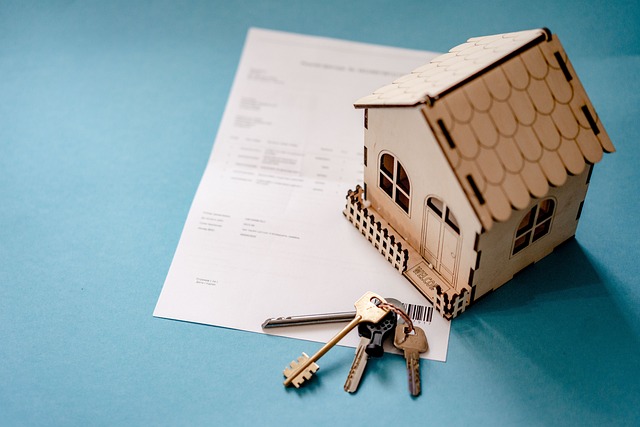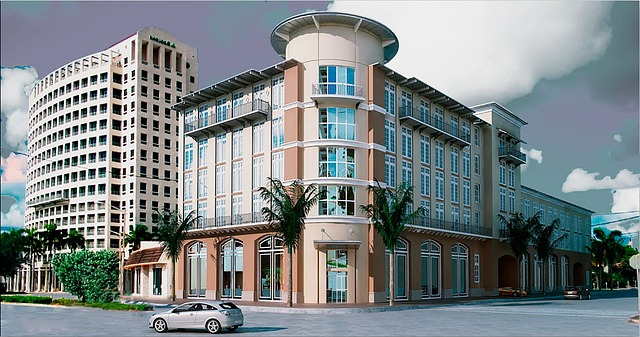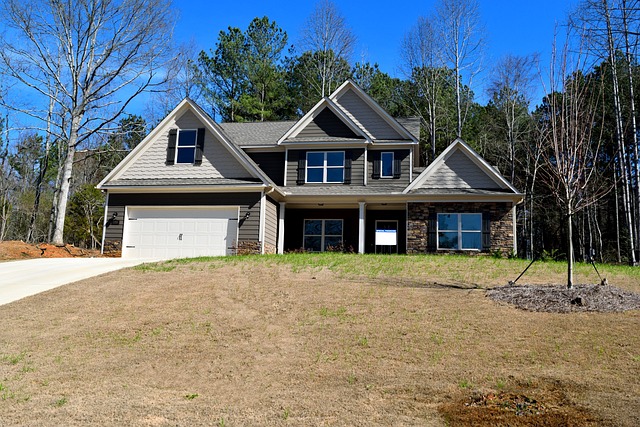Buying a second property in Singapore requires careful consideration of various financial, legal, and market factors. Prospective buyers must understand the local property market's nuances, including the availability of financing solutions tailored for second-time homebuyers through the Central Provident Fund (CPF) with specific rules. It's essential to evaluate banking loans and mortgage options, considering interest rates, loan-to-value ratios, and diverse repayment periods. Buyers should stay informed about government cooling measures, housing policies, and their impact on property affordability and investment feasibility. The Total Debt Servicing Ratio (TDSR) and Mortgage Servicing Ratio (MSR) are critical in determining borrowing limits and mortgage repayments. Additionally, buyers may explore innovative financing options such as REITs or P2P lending platforms, aligning with their investment approach and risk tolerance. The Minimum Occupation Period (MOP), Additional Buyer's Stamp Duty (ABSD), and the Inland Revenue Authority of Singapore (IRAS) are key legal and tax considerations to factor into this significant decision. To navigate these regulations effectively and make an informed investment, professional guidance from real estate and financial experts is highly recommended when buying a second property in Singapore.
explore the nuances of the Singapore property market tailored for second-time buyers, it’s crucial to navigate the financial landscape with a clear understanding of your options. This comprehensive guide delves into the various avenues for financing a second property in Singapore, from traditional bank loans to alternative investments like REITs and peer-to-peer lending. Discover how government schemes and grants can support your purchase, while also considering the legal and tax implications unique to owning multiple properties in this vibrant island nation. Whether you’re an experienced investor or new to property ownership, this article provides vital insights into accessing the best financing solutions for buying a second property in Singapore.
- Understanding the Singapore Property Market for Second-Time Buyers
- Assessing Your Financial Health: The Prerequisite for Securing Financing
- Government Schemes and Grants for Second Property Acquisition in Singapore
- Exploring Traditional Bank Loans for a Second Property Purchase
- Alternative Financing Options: From REITs to Peer-to-Peer Lending
- Navigating Legal Considerations and Tax Implications for Second Property Ownership in Singapore
Understanding the Singapore Property Market for Second-Time Buyers

When considering the purchase of a second property in Singapore, it’s crucial to have a comprehensive understanding of the local property market. This dynamic and competitive landscape offers a variety of financing options tailored for second-time buyers, each with its own set of advantages and requirements. The Central Provident Fund (CPF) is a significant resource that can be utilized for purchasing properties, with specific rules governing its use for subsequent properties. Prospective buyers should also explore bank loans and mortgage packages that cater to different financial profiles, taking into account factors such as interest rates, loan-to-value ratios, and repayment tenures.
The Singapore property market is characterized by its robust regulations, which are designed to ensure a stable and sustainable growth. As a second-time buyer, it’s important to stay informed about the latest housing policies and cooling measures introduced by the government to manage demand and prevent overheating in the property market. These measures may affect the affordability and feasibility of acquiring a new property, thus influencing one’s financing choices. Additionally, understanding the nuances of the resale vs. new flat dynamics, as well as the varying demand for different types of properties across Singapore, will be pivotal in making an informed decision when buying a second property. Prospective buyers should also consider the potential for capital appreciation over time, which can contribute to the long-term value of their investment.
Assessing Your Financial Health: The Prerequisite for Securing Financing

When contemplating the purchase of a second property in Singapore, a thorough assessment of your financial health is paramount. Prospective buyers must first understand their current financial situation to determine if they can comfortably afford an additional mortgage. This involves evaluating existing income streams, debts, savings, and expenses. Lenders in Singapore are stringent, requiring borrowers to demonstrate financial stability and responsibility through documentation such as recent pay slips, bank statements, and credit reports. By ensuring that your financial ducks are in a row, you enhance your chances of securing favorable financing terms for your second property. It is advisable to consider the Total Debt Servicing Ratio (TDSR) framework, which governs how much an individual can borrow based on their monthly income and existing obligations. Additionally, the Mortgage Servicing Ratio (MSR), which dictates the proportion of a borrower’s monthly income that can be allocated to repaying a home loan, is another critical factor to keep in mind. Buying a second property in Singapore necessitates careful financial planning and a clear understanding of the lending landscape to navigate the process successfully and responsibly.
Government Schemes and Grants for Second Property Acquisition in Singapore

Navigating the realm of real estate finance in Singapore for a second property can be streamlined with the assistance of government schemes and grants specifically designed to facilitate such acquisitions. Prospective buyers have access to options like the Additional Housing Grant (AHG), which offers financial aid to Singaporeans purchasing resale HDB flats. This grant is particularly beneficial for those whose household income meets the criteria set by the Housing & Development Board (HDB). Moreover, the Common Investment scheme (CIS) allows Singaporeans to own two properties, with certain conditions applied, offering a pathway to investment and home ownership simultaneously. It’s also worth considering the CPF Housing Grant (CHG), which may be available for eligible applicants who meet the income requirements and are buying a resale HDB flat. These initiatives underscore the Singapore government’s commitment to making housing more accessible, including second property purchases, for its citizens. Prospective buyers should thoroughly review the eligibility criteria and terms associated with these grants and schemes to ensure alignment with their financial capacity and housing goals.
Exploring Traditional Bank Loans for a Second Property Purchase

Navigating the Singapore property market for a second property purchase can be an astute financial move, and traditional bank loans remain a popular financing option among buyers. In Singapore, where property demand is high and real estate continues to appreciate, securing a loan for a second property involves understanding the prevailing loan-to-value (LTV) ratios and interest rates that banks offer. Prospective borrowers must consider their existing mortgage obligations, as these will influence the maximum loan amount available for a new property. Typically, banks in Singapore offer LTV ratios ranging from 75% to 80% for second property loans, depending on factors such as the type of property, its location, and the buyer’s financial profile.
The interest rates for second property loans are generally higher than those for first-time buyers due to the perceived higher risk involved. Buyers should explore fixed-rate mortgage options to mitigate the impact of any future rate hikes on their mortgage repayments. Additionally, it is advisable to compare offerings across various banks and financial institutions to identify the most competitive interest rates and loan terms. Prospective buyers must also take into account additional costs such as legal fees, stamp duties, and other transactional expenses that can affect the overall cost of financing a second property in Singapore. Engaging with a mortgage broker can provide personalized advice and streamline the process of selecting the best financing option tailored to one’s unique financial situation.
Alternative Financing Options: From REITs to Peer-to-Peer Lending

When considering the acquisition of a second property in Singapore, investors and homebuyers have a variety of financing options beyond traditional bank loans. Real Estate Investment Trusts (REITs) offer an opportunity to invest in large-scale real estate portfolios, including properties for rental income generation or potential appreciation. For those looking for more direct forms of investment, peer-to-peer (P2P) lending platforms have emerged as alternative avenues for securing financing. These platforms connect individual lenders with property seekers, enabling a more personalized and sometimes more flexible loan arrangement compared to conventional banking routes. Prospective second property owners should evaluate the terms and conditions of each option carefully, as REITs and P2P lending come with their own set of risks and rewards. The choice between these alternatives depends on one’s investment strategy, risk appetite, and the specific financial objectives associated with buying a second property in Singapore’s dynamic real estate market.
Navigating Legal Considerations and Tax Implications for Second Property Ownership in Singapore

When considering the acquisition of a second property in Singapore, it is imperative to understand the legal framework and fiscal obligations that govern such transactions. Prospective buyers must navigate the Minimum Occupation Period (MOP) stipulated by the Housing & Development Board (HDB), which mandates that one must occupy the first property for a set period before they are eligible to purchase a second property without restrictions. This policy is designed to ensure a stable housing market and promote home ownership among citizens.
Moreover, tax implications are a critical aspect to consider when buying a second property. The Inland Revenue Authority of Singapore (IRAS) imposes additional buyer’s stamp duty (ABSD) on the purchase of any residential property beyond the first. Rates increase progressively with each subsequent property. For example, Singapore citizens will incur a 7% ABSD on their second property, while permanent residents face a 10% rate. Foreign entities are subject to an even higher 15% ABSD. It is advisable to consult with real estate and tax professionals to fully comprehend the financial repercussions and to structure the purchase in a manner that aligns with your long-term financial strategy, as buying a second property in Singapore comes with significant legal and fiscal considerations.
When considering the purchase of a second property in Singapore, it’s crucial to navigate the multifaceted landscape of available financing options. This article has outlined key considerations, from understanding the local market dynamics to assessing your financial readiness for a second property acquisition. Prospective buyers can tap into government schemes and grants designed to facilitate such investments, while traditional bank loans remain a popular choice for funding. Additionally, alternative finance avenues like Real Estate Investment Trusts (REITs) and peer-to-peer lending platforms present viable options for those looking beyond conventional banking channels.
Ultimately, with careful planning and a thorough understanding of the legal and tax implications associated with second property ownership, buyers can make informed decisions to secure their financial future in Singapore’s vibrant real estate market. Whether you’re an investor or a homeowner seeking additional living space, this guide provides a comprehensive overview to help you access the best financing solutions for buying a second property in Singapore.
